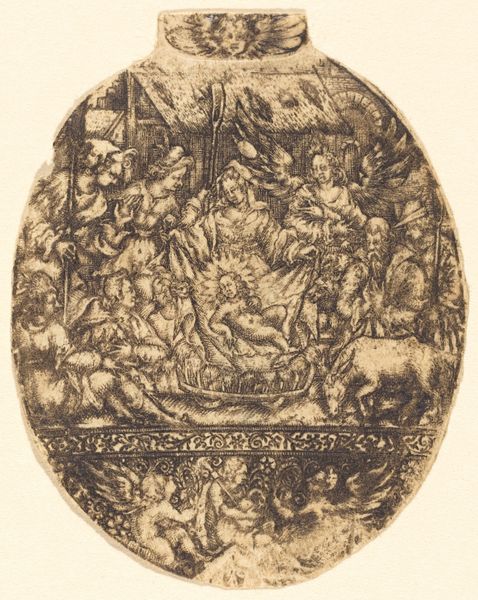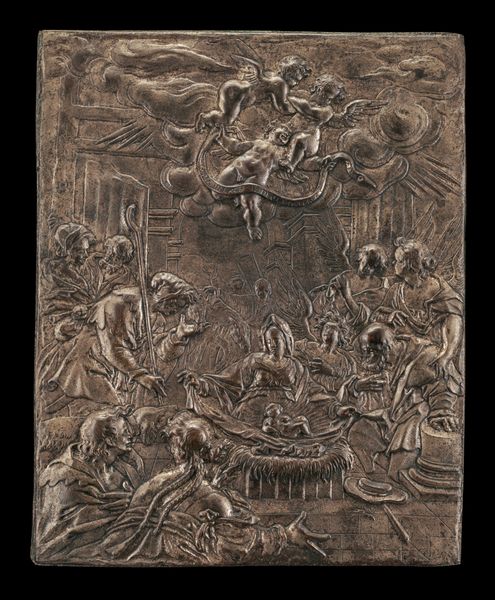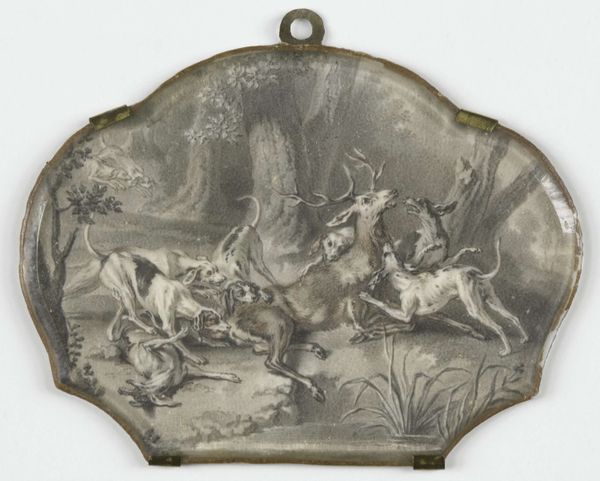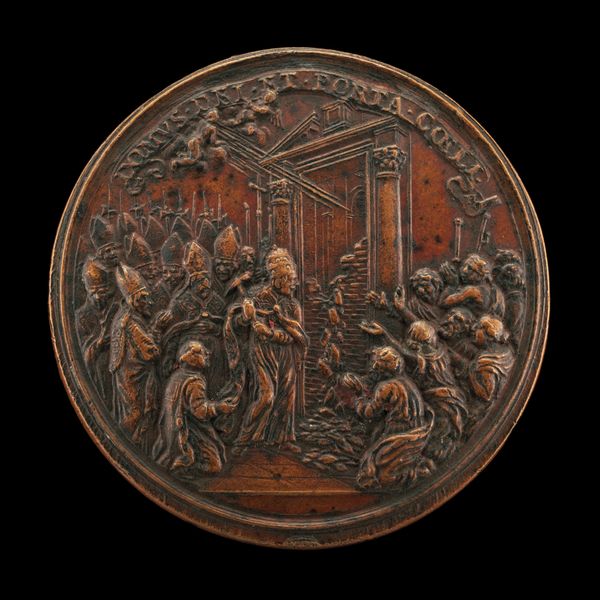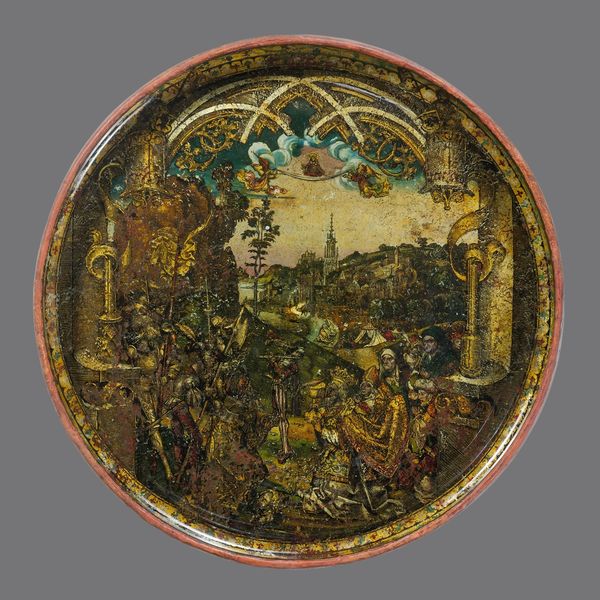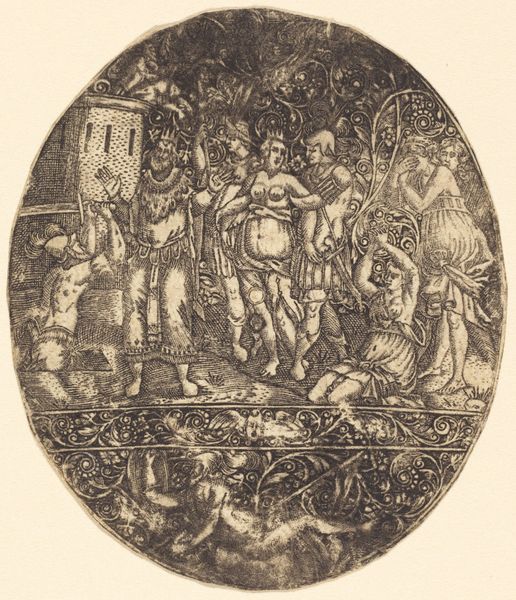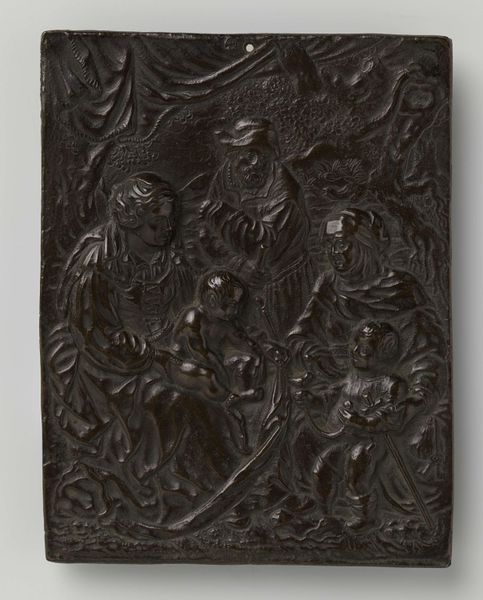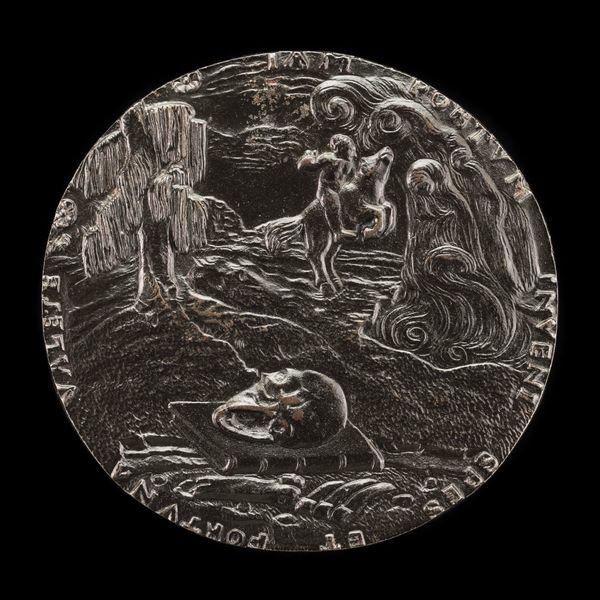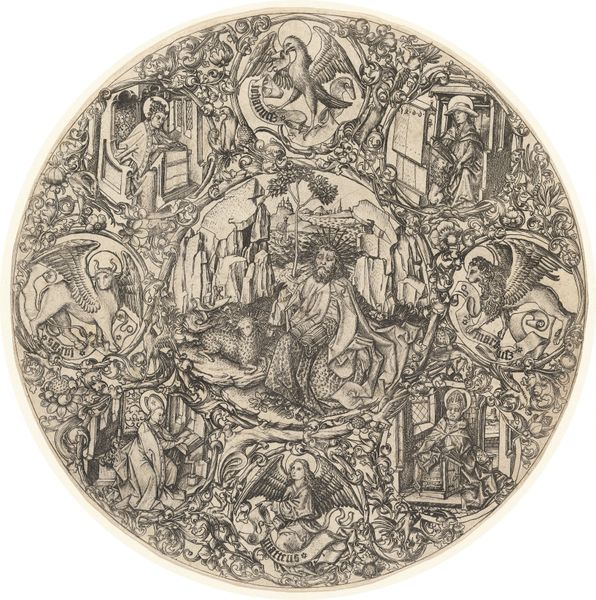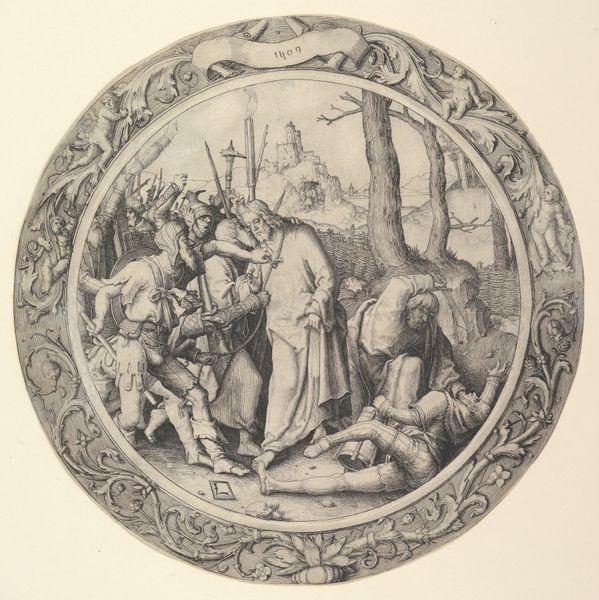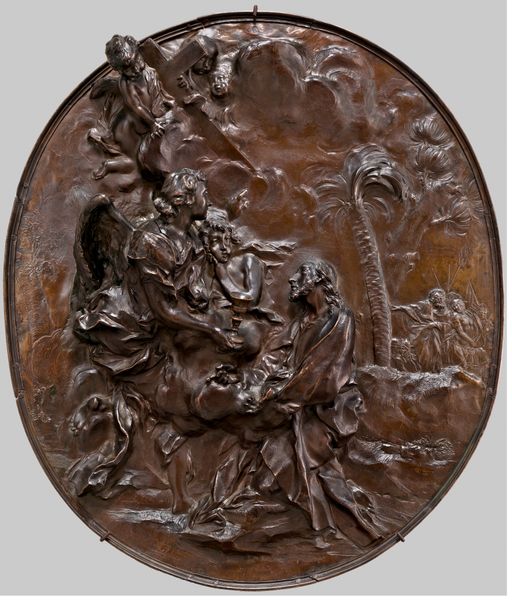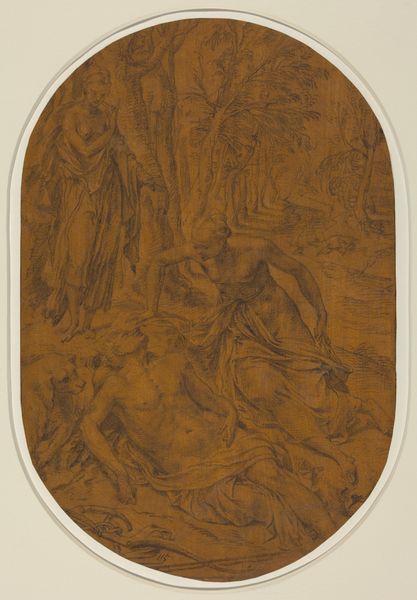
relief, bronze, sculpture
#
narrative-art
#
baroque
#
sculpture
#
relief
#
bronze
#
sculptural image
#
figuration
#
sculpture
#
history-painting
Dimensions: 85.1 × 106.7 cm (33 1/2 × 42 in.)
Copyright: Public Domain
Curator: Looking at this bronze relief, The Massacre of the Innocents created sometime between 1700 and 1725 by Francesco Bertos, one is immediately struck by its compact depiction of horror. What's your initial take on it? Editor: The overall effect is one of swirling chaos, tightly composed within the circular frame. There is a clear effort to create depth despite being a relief, pulling you into this space of violence. Curator: Absolutely. The choice to represent this biblical story—Herod's order to kill all male children in Bethlehem—reveals much about cultural anxieties regarding power, sacrifice, and protection of the innocent. Think about how such images functioned at a time of great political and religious strife. Editor: The figures are positioned almost as if performing within a stage. Consider how the architectural setting—the classical buildings juxtaposed against a more wild, natural setting in the background—frames and heightens the drama. Curator: The Baroque style, here, enhances the emotional intensity. See the dynamic poses, the contorted bodies...Bertos taps into primal fears. It’s more than just a historical account; it’s a potent emotional drama rendered in bronze, ensuring a certain permanence and gravity to the scene. What about the use of bronze itself? Editor: Well, the choice of bronze flattens and unifies the field. The bronze surface, while attempting depth, is limited by its physical composition and medium as relief sculpture. Notice how the reflections catch, the texture brings depth from our angle—and it simultaneously restricts it, as we're brought back to this singular plane. Curator: Yes, that restriction paradoxically heightens the emotional impact by focusing it so intensely within a contained space. There’s a lasting psychological impact there, stemming from the visual echoes of history it carries, no? Editor: Precisely. The medium lends itself to this tension, reflecting themes that we have known to echo through many stages of civilization, the cyclicality of conflict and protection, displayed within the picture frame. Curator: Ultimately, Bertos compels us to confront uncomfortable truths about the darker aspects of humanity—and their lingering traces within our collective consciousness. Editor: Yes, by emphasizing these material and formal strategies we see beyond a story frozen in time. This creates a constant relevance within the canon.
Comments
No comments
Be the first to comment and join the conversation on the ultimate creative platform.
